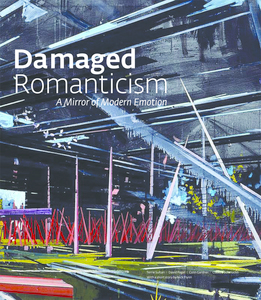Billingham, Richard 
![Exhibition Catalogue 'Damaged Romanticism' 2009 jpg.jpg [thumbnail of Exhibition Catalogue 'Damaged Romanticism' 2009 jpg.jpg]](https://eprints.glos.ac.uk/7438/1.hassmallThumbnailVersion/Exhibition%20Catalogue%20%27Damaged%20Romanticism%27%202009%20jpg.jpg)  Preview |
Image
Exhibition Catalogue 'Damaged Romanticism' 2009 jpg.jpg - Draft Version Download (3MB) | Preview |
Preview |
Text
Press Release for Exhibition 'Damaged Romanticism' 20508.pdf - Draft Version Download (52kB) | Preview |
|
Text
‘Damaged Romanticism’, at the Parish Art Museum, New York 2008.docx - Draft Version Download (201kB) |
Abstract
Photographic urban landscape work from Billingham's series 'Black Country' was exhibited in 'Damaged Romanticism', University of Houston, Texas, (22 August - 15 November 2008) touring to Grey Art Gallery, New York University (January 13–April 4, 2009). This exhibition revolved around a seemingly simple premise: powerful, positive artwork can spring from profound disappointment. If tempered, loss can be transformed from a descent into despair into a journey of optimism and creative renewal. The concept is underscored by a clash of current events—political and cultural change, natural disasters, financial uncertainty, and war—with historical influences, especially the European romantic movement, which infused the arts and literature of the late 18th and early 19th centuries. The exhibition imagined a “damaged romanticism,” where the historical movement’s exoticism and fantasy have been reshaped by the clarity of pragmatic realism. The exhibition included painting, sculpture, installation, photography, and video by fifteen international artists and showcased the confrontation between classic, highly idyllic, romanticism and contemporary pragmatism. It conveyed the complexity of everyday reality by giving form to multifaceted, even contradictory sentiments, placing rebellion, disillusionment, and defiance side by side. The featured works were 'stubbornly optimistic' and illustrate what might be called an “aftermath aesthetic,” a visual representation of the determination to defeat the deluge, heartbreak, or devastation of life. Built upon the belief that rebirth grows out of experiences of things gone wrong, the exhibition suggested that the future can be better than the present. Embodying a survivor’s sensibility, damaged romanticism left no illusions about the difficulty of struggle or the chance for success. Instead, the artists presented explored multilayered responses to the world, identifying damaged romanticism as a powerful mirror of modern emotion. Beside Billingham, other artists were Berlinde De Bruyckere (Belgium); Edward Burtynsky (Canada); Sophie Calle (France); Petah Coyne (United States); Angelo Filomeno (Italy/United States); Jesper Just (Denmark/United States); Mary McCleary (United States); Florian Maier-Aichen (Germany/United States); Wangechi Mutu (Kenya/United States); Julia Oschatz (Germany); Année Olofsson (Sweden); David Schnell (Germany) and Ryan Taber/Cheyenne Weaver (United States).
| Item Type: | Show/Exhibition |
|---|---|
| Related URLs: | |
| Subjects: | N Fine Arts > N Visual arts (General) For photography, see TR |
| Divisions: | Schools and Research Institutes > School of Arts, Culture and Environment |
| Research Priority Areas: | Creative Practice and Theory |
| Depositing User: | Richard Billingham |
| Date Deposited: | 31 Oct 2019 13:43 |
| Last Modified: | 05 Aug 2025 09:47 |
| URI: | https://eprints.glos.ac.uk/id/eprint/7438 |
University Staff: Request a correction | Repository Editors: Update this record

 Tools
Tools Tools
Tools